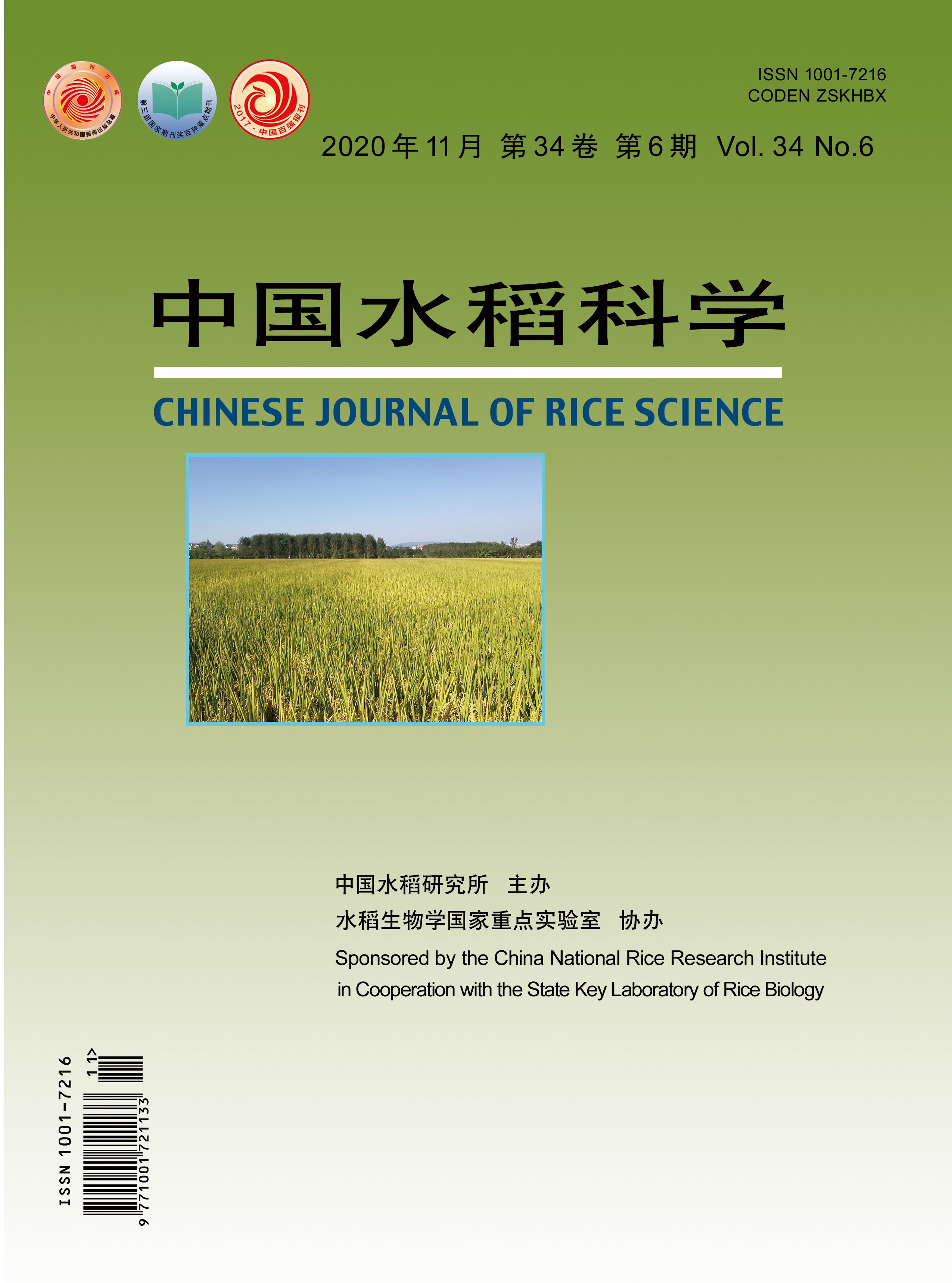【Objective】Mechanical transplanting results in serious transplanting shock of rice seedlings and a longer recovery stage, which negatively impacts the growth of rice seedlings in the paddy field and the yield formation of machine-transplanted rice. The objective of the research is to investigate the effects of brassinosteroid (BR) soaking on transplanting shock and grain yield of hydroponically grown long-mat seedlings (HLMS) under mechanical transplanting. 【Method】We analyzed the effects of different concentrations of BR (CK, T1, T10, T20,BR concentrations of 0 mg/L, 1 mg/L, 10 mg/L, 20 mg/L in the nutrient solutions, respectively) soaking on morphological traits, dry matteraccumulation, antioxidant system, endogenous hormone concentrations and grain yield of HLMS under mechanical transplanting. 【Result】Root soaking in BR could promote above-ground part growth of rice, the plant height under T1, T10, T20 was 11.68%, 8.12% and 7.61% higher than CK,respectively;and the effect on the root was more obvious, BR soaking significantly increased the root length, root surface area, root tip number, root volume, root diameter, root weight and root/shoot ratio. At low BR concentration, root tip overnumbered thatathighBRconcentrationwhile other root system indicators were better under high concentration BR treatment. Compared with CK, BR (T1, T10, T20) soaking decreased the H2O2 content inleaves by 12.50%, 23.25% and 22.25% 12 days aftertransplanting, respectively, and increased the activities of antioxidantenzymes. Compared with the day of transplanting, thezeatin (ZT) concentration in the leaves under BR soaking treatmentsincreased rapidly (197.27%, 153.11% and 243.78%, respectively), while under CK treatment it increased slowly (2.94%), the rootperformance was consistent with leaves, and the auxin (IAA) concentration in the roots was significantly higher than that of CKon the second day after transplanting. The gibberellin (GA3) content of roots in BR soakingtreatments was significantly higher than that of CK within one week after transplanting. Compared with CK, T10 significantly increased the number of spikelet per panicle by 15.04%, and the seed-setting rate by 6.62%. T20 obviously increased the seed-setting rate by 6.17%. However, T1, T10, and T20 notably decreased 1000-grain weight. The grain yield underT10 and T20 treatments (the corresponding values were 10.58 t/hm2 and 10.84 t/hm2) were 5.11% and 7.99% higher than CK (10.04 t/hm2), while grain yield under T1 (9.68 t/hm2) was 3.58%lower than that of CK,and there was no significant difference among these treatments. 【Conclusion】Briefly, BR (T10, T20)soaking at proper concentrationscould mitigate the transplanting shock, increase antioxidant enzymes activities, decrease H2O2 content of leaves, improve the contents of ZT, GA3, and IAA to different extent, efficientlypromote roots growth, increase the number of spikelet number per panicle and seed-setting rate of HLMS under mechanical transplanting. This study willlay a theoretical basis and provide technical reference for reducing machine-transplanting shock and promoting high and stable yield of mechanical transplanted rice.

